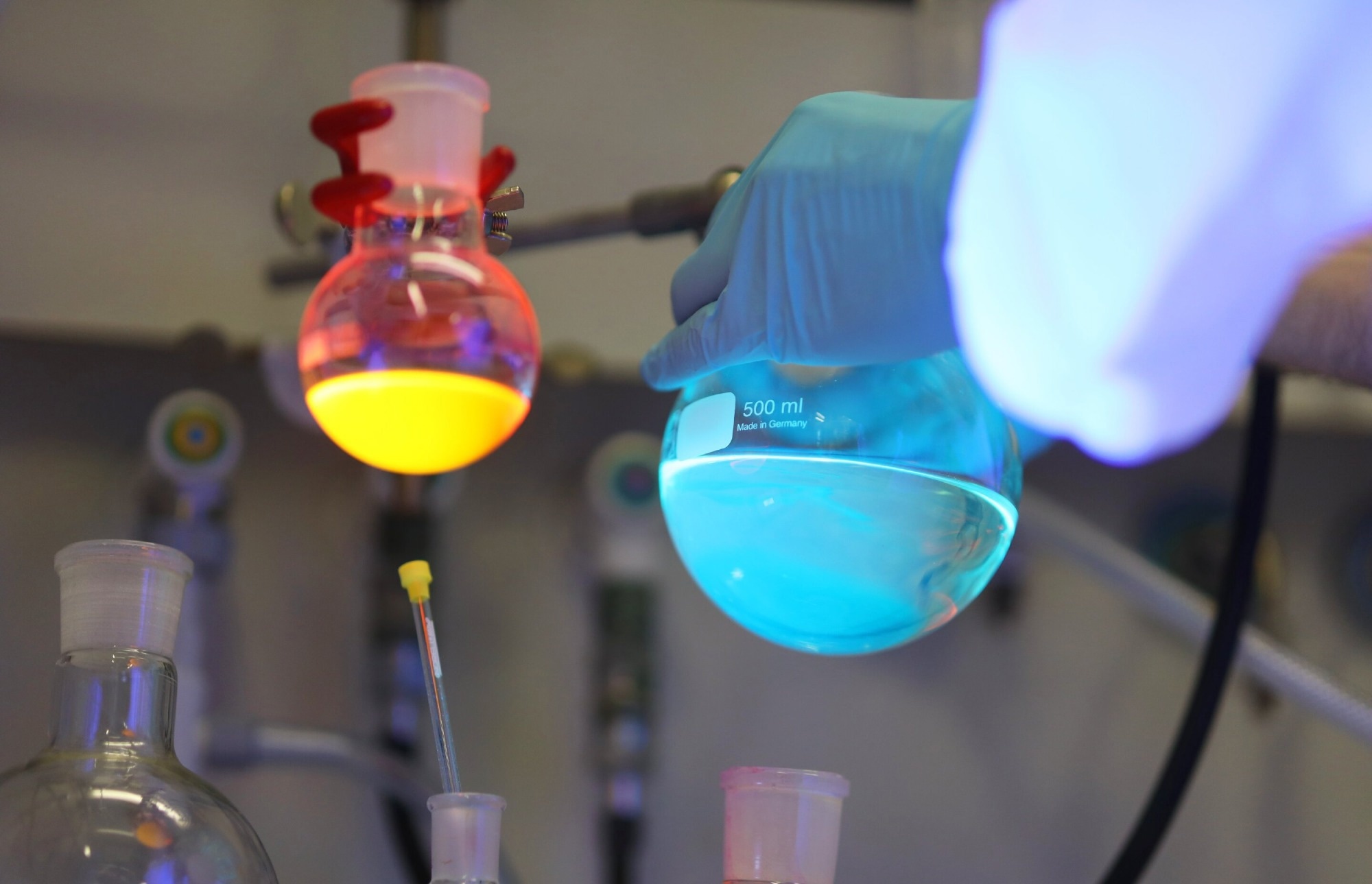Dr. Johannes Fessler of the Leibniz Institute for Catalysis in Rostock has created novel techniques for manufacturing pharmacological precursors employing iron, manganese, and cobalt catalysts. These three chemical elements can all potentially replace several noble metals, which are frequently employed in organic chemistry to accelerate the reactions of fine compounds.
 Reaction vessels in the lab. Image Credit: Leibniz Institute for Catalysis/ Danny Gohlke
Reaction vessels in the lab. Image Credit: Leibniz Institute for Catalysis/ Danny Gohlke
For instance, the scarcity of platinum and palladium, the high extraction cost, and significant greenhouse gas emissions make them pricey. Therefore, eliminating the need for such noble metals in organometallic catalysis is one of the future objectives of "green" chemistry.
The results were obtained by Johannes Fessler for his dissertation, which he successfully defended in January. Together with his Doctorate Supervisor, Professor Dr. Matthias Beller and Research Group Leader, Dr. Kathrin Junge. The research is published in the journal Chemical Science.
For instance, one can read about how "simple starting materials" are converted into a complex active ingredient candidate based on pyrrole, a popular medication precursor, at room temperature and with an acid-tolerant homogenous iron catalyst.
When starting ingredients, catalyst, solvent, and finally, the result and by-product are all dissolved in a single reaction vessel, this is referred to as "homogeneous" catalysis. As a result, as Dr. Fessler explained, they need to be separated after each chemical step, purified, and ready for the next.
If you manage to save one of these steps in the chemical process, you greatly reduce the amount of time and material required and minimize waste.
Dr. Johannes Fessler, Leibniz Institute for Catalysis
Using a chemical cascade, he precisely accomplished this with the pyrrole reaction.
International research interest has grown in the replacement of noble metals with iron and similar materials as catalysts. Over the last several years, LIKAT has developed a great level of knowledge in this area. Approximately 25% of Johannes Fessler's younger colleagues at the institute are focusing their doctoral theses on non-noble metal catalysis.
On the one hand, this work helps to conserve resources. Dr. Fessler said, “The task of climate-neutral, sustainable management is facing the chemical industry as well as all other sectors.”
Iron is a plentiful element, constituting 5% of the Earth's crust. Manganese, whose name derives from its position in the periodic table, is also the most prevalent transition metal on Earth, after titanium and iron.
However, there is a good reason why base metals have not been that significant in organic chemistry up to this point.
They are often less stable in catalytic processes than catalysts made of noble metals, and in addition, they usually work at high temperatures and pressures in the area I am researching.
Dr. Johannes Fessler, Leibniz Institute for Catalysis
Nevertheless, the complex compounds used in the manufacture of drugs would be destroyed by such severe circumstances. Particularly vulnerable are the chemical structures known as functional groups in the molecule, guaranteeing a drug's particular effect.
High Chemical Precision in Implementation
Demonstrating that catalysts composed of iron, manganese, and cobalt can occasionally function with noticeably softer reaction conditions compared to earlier practice is a huge accomplishment in this regard.
These are 20º to 30 ºC temperatures in the case of pyrrole. Another benefit of Johannes Fessler's method was made clear by his experiments: His non-noble metal catalysts precisely converted only the molecules required by the scientists for the actual synthesis. “We call this approach highly selective. It produces hardly any by-products or waste.”
Johannes Fessler experimented with different active components and drug precursors to test the reaction's dependability. “We wanted to make sure that the iron catalyst also activates the right place in the molecule for these substances and spares the sensitive functional groups.” The chemist tested his approach in this manner, among other things, on commonly used blood pressure and cholesterol-lowering pharmaceuticals.
Chemistry Excursion: Cascade Reaction
Lastly, the starting material for the previously described cascade reaction is nitroarene, a nitrogen-containing material. It is hydrogenated in the first stage using formic acid and an iron catalyst that is readily available in the market, and it then instantly goes through a second reaction to form pyrrole.
One frequent fine chemical used in the pharmaceutical industry is pyrrole. It is a type of heterocycle, a ring-shaped carbon molecule in which an element other than carbon (C), such as nitrogen (N), replaces one carbon atom (C).
There are two steps in the cascade response. First, the nitroarene is hydrogenated to create an amine, sometimes referred to as aniline, a benzene ring with an amino group (NH2) that starts a subsequent reaction immediately.
The amino group reacts with a dicarbonyl molecule in the second step that follows, eliminating water in the process. Hence, it condenses to produce pyrrole.
Because of the acidic environment, formic acid serves as both an acid and a reducing agent, which is why the cascade is successful. But for this to happen, a catalyst that functions effectively in acidic environments is needed. This is exactly the situation with Johannes Fessler's iron-based catalyst.
Journal Reference:
Fessler, J., et.al. (2023) Applying green chemistry principles to iron catalysis: mild and selective domino synthesis of pyrroles from nitroarenes. Chemical Science. doi.org/10.1039/D3SC02879H.